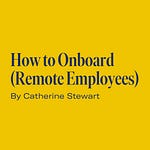This episode is a 28-minute listen. The notes are a 4-min read. Subscribe here.
Featuring Jesse Hunt
📝 Notes:
Introduction:
It can be unnerving to put yourself out there to ask for business, money, time.
Many posts & blogs say, "do this, don't do that," but cold outreach can be exciting, creative, and effective.
It's important to learn the basics: what is a cold email, how do they work, and what are some different frameworks.
Content, Copy & Packaging:
Think of a beautiful letter (e.g., hand-written, pretty color) → earns the right to take up 30 seconds of your day.
Similarly, with email, the packaging is the subject line – and many people discount it.
The subject line is like a welcome mat --> helps the recipient feel more comfortable and engaged with what you are positioning.
A poorly crafted subject line (e.g., "Re: ____") is more likely to go to spam. It also annoys people. Don't trick your recipients into opening an email → nobody likes to feel tricked; taking shortcuts with underhanded tactics won't work in the long term.
Buyers buy with emotion and justify with rationale.
When to personalize vs. not:
It's common to "tier your accounts" --> to determine which accounts could have a high yield (opportunities created).
For some accounts, you will target specific individuals with a high level of customization. Other accounts and individuals go into a "batch & blast" process (less customized but still familiar).
Subject lines
Ideal to do a personalized email subject line whenever possible (e.g., "Wouldn't it be great if you could clone [former top employee name]?")
Review the person's footprint (e.g., blog, bio) and include a reference in the subject line or email.
Typical open rates: depends on the campaign and situation —> hard to generalize.
What to do if someone isn't responding:
Show empathy (e.g., "I'm guessing you're slammed right now.”)
Keep it short (so you don't annoy them).
Ask a question they can respond to quickly if interested (e.g., "any thoughts here?").
Change the subject line of the email thread mid-communication (e.g., "Given up?") followed with a concise email (e.g., "Have you given up on this project?") → nobody likes to give up.
Body of the email
Keep the body of the email short → If you write a long email, you ask for a time commitment before you've earned the right to ask for their time.
Test the emails on yourself first (e.g., to see how many scrolls it requires on the phone).
3x3 research: in three minutes, you should be able to find three pieces of relevant information about a contact or account (e.g., recent funding, hire, product release) → try to get that research into the email.
Know to whom you are selling (e.g., only use sales jargon with people in sales).
The tone should be respectful, personal, and authentic (senior leaders get dozens of emails daily - they can sniff out BS).
Emails vs. Calls:
Know your strengths and weaknesses - "sales is a brutal sport - need to know what you are good at" – if you are great at talking to people, you may do better on calls. If you are a strong writer, you may do better on emails.
Split testing/AB Testing: may do 50 cold calls and 50 emails and compare the yield.
Introverts do very well in sales - don't assume you need to be extroverted.
How to avoid burnout:
Cold outreach can be exhausting, lonely & filled with rejection.
Even the best reps face more rejection than acceptance.
Stay close to your manager. Let them know when you feel overburdened or need a break → that is what the team is for.
Try to make it fun - even if people say no, find the relevant information.
Common mistakes
Pitch slapping - connecting with someone & immediately afterward pitching a product or service → scorched-earth tactic and sloppy; bad for sales community in general.
Taking too long to get to the point → don't talk too much about yourself. Just explain how you are going to help the buyer solve a problem.
Don't use an overly formal tone; okay to use conjunctions.
Interest-focused CTAs & Empathy
Your call-to-action (aka CTA) matters.
An interest-focused CTA (e.g., "are you interested in meeting?") tends to perform better than a time-focused CTA (e.g., "can I have 15 minutes of your time?"). Time is finite & interest is infinite.
Better to come from a "consultative" approach vs. "I want to talk to you." Try to present something valuable to the buyer (e.g., "are you interested in solving those problems"?). It's a subtle difference and makes it about the other person.
Empathy is a core skill set in sales. Avoid using personal pronouns like "I" and "me." It makes it about you, not the buyer.
📇 Glossary:
Tiering your accounts: determining which accounts could have a high yield.
Yield: opportunities created, meetings set out of the outreach set
Split testing (aka A/B Testing): a controlled experiment aimed at improving a specific metric
3x3 research: three minutes for three relevant pieces of research
Ideal Customer Profile (ICP): the type of company or customer who would most benefit from your product or service
CISO: Chief Information Security Officer
Pitch slapping: a near-instant sales pitch for a product before the need or a connection is established
Scorched-earth tactic: a last-ditch attempt
📇 Further Study:
A Guide to Cold Emailing [HBR Blog]
7 Cold Email Stats To Write Killer Cold Emails [Gong Blog]
How to Write Cold Emails That Always Get Responses [Hubspot YouTube 📺]
The Ins & Outs of Cold Emailing That Delivers Results [Hubspot blog]
From building AWS to crafting the best cold emails by Manny Medina [Podcast]
Cold Email Wizard (Course & Twitter Account)
Other Tips & Tricks [Twitter post from Michelle]
Cold Email [Wikipedia]











